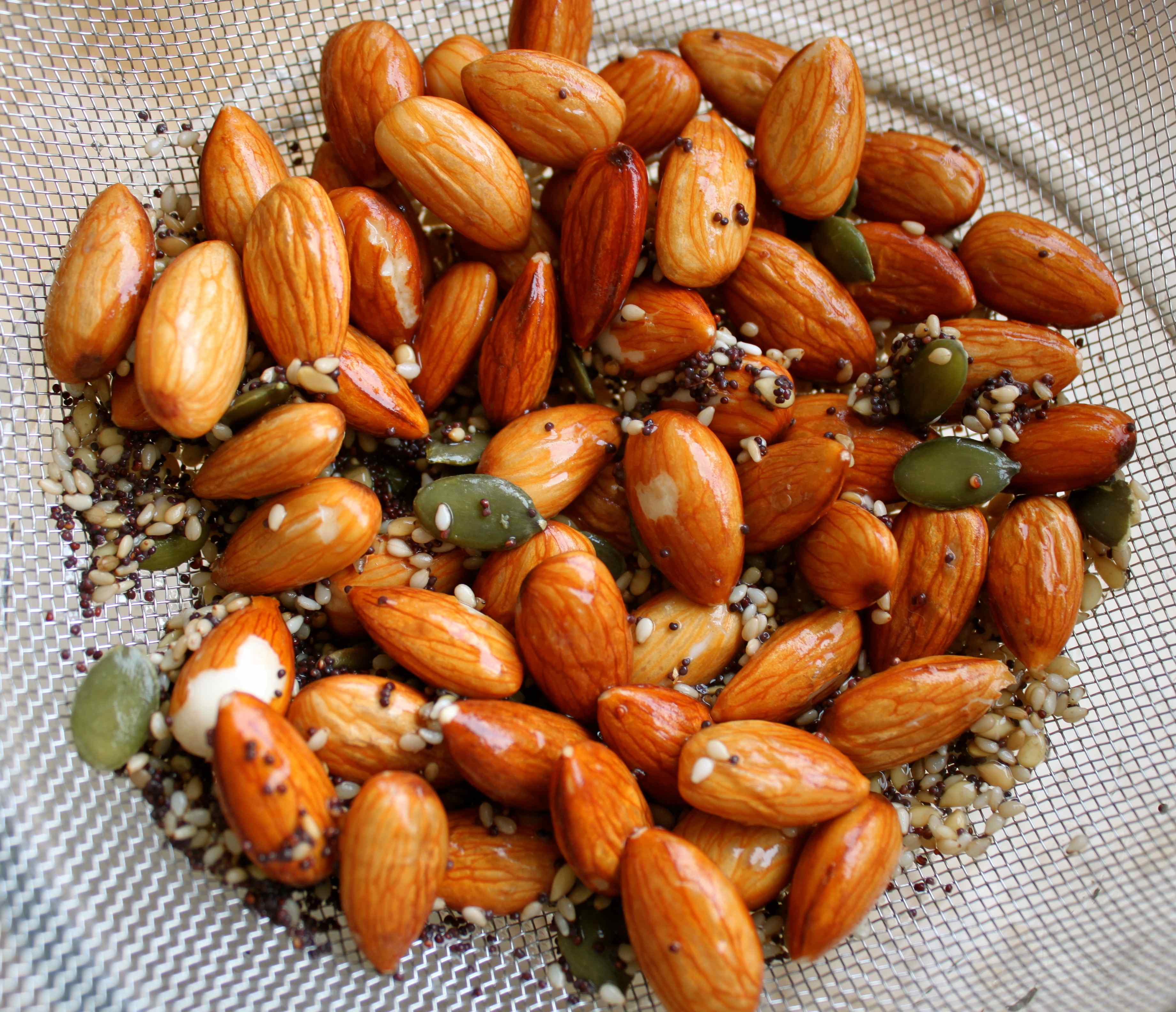 Nuts and seeds are two power foods that can bestow some serious health benefits—including weight loss, reduced levels of inflammation, reduced risk of heart disease and reduces risk of type 2 diabetes. However, as a way of preserving and protecting them in the wild, Mother Nature designed them to be quite difficult to digest, and even toxic.
Nuts and seeds are two power foods that can bestow some serious health benefits—including weight loss, reduced levels of inflammation, reduced risk of heart disease and reduces risk of type 2 diabetes. However, as a way of preserving and protecting them in the wild, Mother Nature designed them to be quite difficult to digest, and even toxic.
You see, locked inside all seeds (nuts, grains, and legumes are seeds of plants too) is the genetic material to grow an entire new plant. As you might imagine, Mother Nature would want to protect a seed from anything that might want to consume it before being able to reproduce itself. Therefore, seeds were equipped with an arsenal of self defense mechanisms known as anti-nutrients, which are contained in the outer seed coat (or bran, in the case of grains). These toxic anti-nutrients keep insects, predators, bacteria, viruses or fungi, from destroying seeds prematurely.
These anti-nutrients also act as built-in growth inhibitors—a preservation system that allows the seeds to remain dormant for long periods of time. This is why they can be kept in a dormant state in seedbanks for decades without any damage to their DNA. The anti-nutrients protect the seed until conditions are right to start the growth cycle. In order to sprout, plants need moisture, warmth, time and slight acidity in the soil or water.
When placed in water or planted in the ground, a seed will begin to germinate. Once the germination process starts, natural enzyme activity eliminates the anti-nutrients from the outer seed coating and transforms the long-term-storage properties of the seed into simpler molecules that are easily digested. This is why soaking nuts, seeds, grains, and legumes has been an important part of traditional food preparation for thousands of years. Soaking mimics the natural germination process that occurs in nature. What’s more, this process unlocks important enzymes and nutrients that are unavailable to us when the seeds or nuts are not soaked.
Before I go into how to soak your nuts and seeds, I want to explain what the anti-nutrients are, why they can be harmful to your health and why soaking is an important practice. The main anti-nutrients are: enzyme inhibitors, phytates, and lectins.
Enzyme inhibitors
Plant seeds, especially nuts and seeds, contain enzyme inhibitors that ward off predators. These inhibitors block enzyme function, particularly the enzymes required to digest proteins, which can put a real strain on the digestive system if consumed in excess. The inability to digest proteins can lead to chronic inflammation, insulin resistance, impaired digestion, immune suppression, increased allergies, severe intestinal issues and declined mental function.
Phytates (Phytic Acid)
The most known anti-nutrient found in nuts, seeds, and grains is phytic acid (or phytate), a compound that protects the plant seed from premature germination. When you eat foods containing phytates, they combine with calcium, magnesium, copper, iron and especially zinc in the intestinal tract and block their absorption. Phytates also have the potential to block protein absorption.
Over time, regularly consuming foods that contain phytates can lead to serious mineral deficiencies and cause a wide array of health problems including bone loss, digestive issues, autoimmune diseases, allergies, skin irritations, decaying teeth, and hormone disruption.
However, seeds, nuts, and grains contain an enzyme called phytase, which is activated by soaking and breaks down phytic acid.
Lectins
Lectins are basically carb-binding proteins that are present in nearly all foods, both plant and animal. In plants, they act as built-in pesticides that nature intended for warding off predators (humans included). These types of lectins are highly concentrated in grains (especially wheat), beans (especially soybeans), and nuts. When consumed in large quantities, they are very harmful to the small intestine. They stick to the lining of the small intestine and damage the sensitive villi that are responsible for transporting nutrients into the bloodstream.
Over time, lectins lead to a condition called “leaky gut syndrome” which means that the delicate lining of the small intestine has become so damaged and perforated that undigested food particles, proteins, toxins and other pathogens are able to “leak” into the bloodstream and bind to tissues and organs throughout the body. This triggers inflammation in the body as a way to protect the affected tissue. Because of this, lectins are also linked with autoimmune disorders like irritable bowel syndrome, Chron’s disease, ulcerative colitis, thyroid disorders, fibromyalgia, arthritis, lupus and many others.
Soaking and Sprouting Increases Nutritional Content
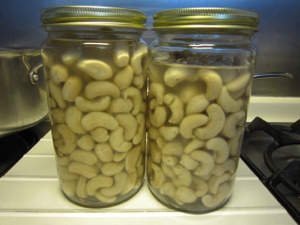 If all this sounds like a hazard to your health, it is! Many people suffer from the effects of antrinutrients beacuse they eat a large amount of grain foods that have not been soaked or sprouted. Nuts and seeds are typically eaten in small quantities compared to grains, but it is still important to soak them as well. When soaked, the vital proteins, vitamins (especially B vitamins), enzymes and minerals are unlocked, making them ten times more nutritious than in their raw unsoaked form. Our not-so-distant ancestors understood this very well. They never consumed these foods without soaking, sprouting, or fermenting them first.
If all this sounds like a hazard to your health, it is! Many people suffer from the effects of antrinutrients beacuse they eat a large amount of grain foods that have not been soaked or sprouted. Nuts and seeds are typically eaten in small quantities compared to grains, but it is still important to soak them as well. When soaked, the vital proteins, vitamins (especially B vitamins), enzymes and minerals are unlocked, making them ten times more nutritious than in their raw unsoaked form. Our not-so-distant ancestors understood this very well. They never consumed these foods without soaking, sprouting, or fermenting them first.
How to Soak Nuts and Seeds
Place the raw nuts or seeds in a glass jar or bowl and cover them with water of the correct temperature (see the chart below). Note: If the chart indicates warm water, it only needs to be warm initially. You don’t have to keep the water warm for the entire soak time.
Add a pinch of salt or apple cider vinegar, and allow them to soak according to the chart below.
Drain off the water and DRY the soaked nuts or seeds by blotting them dry with a towel and then spreading them on a baking sheet and put them in the oven with the oven light on. DO NOT TURN ON THE OVEN. You can leave them in the oven all day to dry while you are away. The light will create a very low heat (no higher than 120 degrees) and will allow them to dry, but won’t harm the delicate oils contained within them.
You may also dry them in a dehydrator.
When you store soaked nuts or seeds, make sure they are completely dry, otherwise they will go moldy very quickly. Soaked nuts and seeds should also be stored in the refrigerator.
Nut and Seed Soaking Guide
(soaking times are in hours)
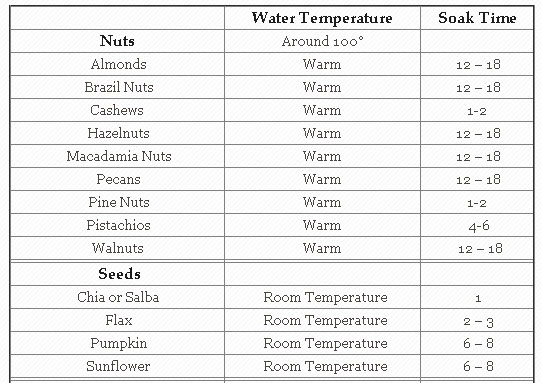
DEE’S SELECTION OF SPROUTED GRAINS
[amazon_link asins=’B017RZQA5Y,B017S0B2Z6,B008KLHCL6,B00LMH0WYY,B00LNDUJ36,B00LNFL3SO’ template=’ProductCarousel’ store=’centforprocfr-20′ marketplace=’US’ link_id=’51d90faf-a2f0-11e7-b1e0-1584a2266249′]
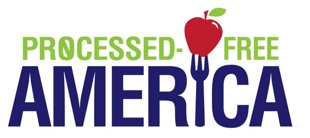
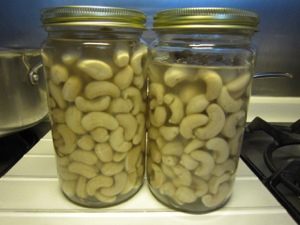
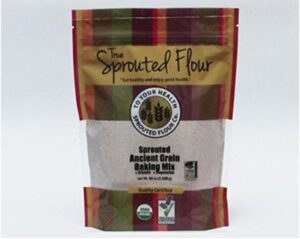
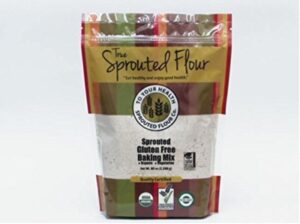
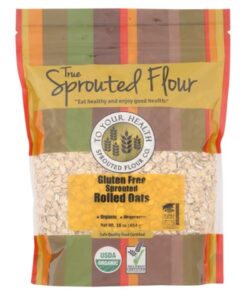
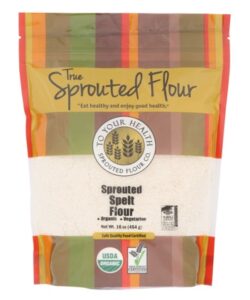
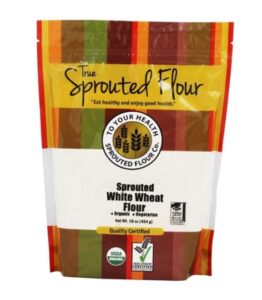
Dear Dee: Is the process and timing for soaking grains/legumes The same as for nuts (except without drying if they are to be cooked in liquid). What about sprouting them? I’ve experimented a little with this.
Also, wondering if you can comment on Dr. Gundry’s advice that pressure cooking will reduce lectins significantly . The background for this question is, I tried Gundry diet for six months or so, and felt pretty good, but found it to be very, very restrictive. It’s also sometimes tough to source some alternative foods in my area. I was trying to deal with leaky gut, diverticulosis suspected SIBO , tick borne illnesses, and severe osteoarthritis. I was also wanting to rely on more plant and less animal proteins; but if you take the beans, grains and nuts away as he says, that isn’t do -able, especially without dairy. Plus it was midsummer and I was desperate for a tomato, some eggplant, and even a cucumber or a bell pepper! All no-nos on Gundry plan (nightshades), yet he hints that sometimes preparation can make these things safer. Finally one really hot day I gave up and made a delicious gazpacho, but I roasted,peeled, and deseeded the tomatoes and peppers, and peeled and deseeded the cuke. Cooking is a huge interest of mine, and it had been a drag to give up so m much variety and color! Anyway I thought maybe I can relax some of these restrictions some of the time, and thought about The Science of Skinny plan. I’ve read your book at least 3 times, and I respect your approach for its moderation and basis in science. I guess I wonder how much basis there is for eliminating all of these plant foods (and recipes!) entirely, and whether there are ways of prepping and cooking that I should adopt routinely so that I can include beans, grains, and nightshade at least sometimes, yet not sabotage health improvement goals. I felt really tired of same old boring food, even though trying to be creative. I wasn’t eating enough after a while and just gave up, decided your approach is better for me.
I know this is already too long, but here I wanted to mention couple examples to do with specific recipes because you are so good at inventing and adapting them. 1) There’s a wonderful recipe by Martha Stewart for asparagus soup that uses the snapped ends for the stock. But, it uses a little cream (just as good without it truth be told…But I’ve also made with a tiny bit organic heavy cream), and like one forbidden potato as the thickener. I’ve tried substituting tapioca starch…doesn’t work. Thought of cassava root but I can’t find it around here. Is a tiny amount of peeled potato once every few weeks going to hurt me? I don’t think so.
2) I love falafels, and figured out how to make them the real way a decade ago. The chickpeas are raw but soaked. I briefly panfry, don’t deepfry, and finish in the oven. Recently I was craving beans so threw caution to the wind and made them. But after soaking for twenty-four hours, I wasn’t in the mood that day. They ended up soaking for two more days (3 total) and when I finally made there were no digestion problems at all. In contrast, if I eat roasted chickpeas that have been thoroughly cooked ( or from canned), they make me sick.
Any comments or experience you have on these issues would be greatly appreciated. Best regards.